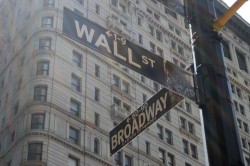How Do ETFs Work?
If somebody wants to get just how ETFs work it is first required to understand their building blocks(if you don’t understand what an ETF is you should read up on sites such as ETF Information Headquarters or perform a google/wikipedia search). Basically, an ETF is a certain type of financial vehicle exchanged on stock markets.
To build an ETF, various financial entities have to be brought together. To organize this, a Fund Manager (think of companies like Vanguard, PowerShares, iShares, etc.) will oversee the different entities and then submit a complete document for the new ETF to the SEC or Securities and Exchange Commission. The organizations the Fund Manager brings to work together will have the preceding responsibilities: The first company will form the investment, the second will enable fund exchanges at values roughly matching the makeup of the fund’s internal securities, and after this happens the next company will place the security on the stock market so that people similar to yourself and me can buy shares from companies like eTrade, Vanguard, Fidelity, and others. This is all explained in the thorough plan that the Fund Manager gives to the Securities and Exchange Commission. The document also includes the make up of the Exchange Traded Fund and the different institutional firm’s role in the ETF forming process and what is needed for buying and selling.
Once the fund is approved by the Securities and Exchange Commission, the Fund is officially formed when an authorized participant forms the Exchange Traded Fund securities into blocks of 50,000 shares. These blocks of securities are going to be held in a custodial bank for safe keeping. The custodial bank is completely overseen by the Depository Trust Clearing Corporation, a United States agency that is tasked with maintaining receipts of the transactions within the Custodial Bank. The custodial bank has to confirm the contents of the assets put in the bank match the description of the Exchange Traded Fund holdings and will form shares of the ETF. These shares will be distributed to the Fund Manager who will then allow them to be placed on the stock market. Dividends and distributions are taken care of by the custodial bank for the fund and they also will deal with little oversight issues.
The shares will be held for a very long time and aren’t extremely active. Due to the buying and selling inactivity and taking care of the capital gains, the capital gains are lower, and thus taxes are lower, for these ETFs as opposed to related mutual funds. Mutual funds must purchase and exchange shares to cover buying or selling, and have to distribute to shareholders the dividends and capital gains. The Fund Manager pays a little fee to the custodial bank for its role in the ETF.
If the securities aren’t open for purchase in big amounts to make up the entire portfolio they are given by different investors. Most of these fund holders are mutual fund or big pension funds which will lend stocks needed to be stored in the custodial bank. For the privilege of using these securities, the loaners get a little interest rate for the loan of the assets paid for by the Fund Manager.
Now that that is complete, the ETF shares will be for sale on the stock exchange. This is typically where the greatest number of traders will interact with the shares of the Exchange Traded Fund. Just like regular stocks, the ETF can be bought and sold on the open market. Not like stocks and mutual funds, ETFs are not always priced at their net asset values of the assets completing the fund. The greatest determing factor in price is driven by supply and demand of the value of the stocks inside the Exchange Traded Fund. But supply and demand for the Exchange Traded Fund, as well as other reasons, will momentarily shift the price positive or negative.
When ETFs start to be priced unlike their stocks, the market maker will make its money during this scenario. If the Exchange Traded Fund is trading above its securities value, the market maker will form new blocks of stocks and create newly formed shares of the Exchange Traded Fund, selling the shares at a premium. When the ETF is priced lower than its summed value, the authorized participant can redeem shares of the ETF for its basket of funds and then redeem those stocks at a premium. These exchanges are called “in-kind transactions” which do not have capital gains taxes because the transaction does not give the monetary price of the ETF share, but gives the internal assets held inside the ETF share . By giving permission to large institutions and rich fund holders to act as specialists, or market makers, the arbitrage opportunity will generate large demand for the ETF which, in practice, keeps the cost of the Exchange Traded Fund similar to the value of the sum of the stocks inside it.
Because the Fund Manager is paying for loans of stocks, everyday services of overseeing the ETF, and custodial bank services the Fund Manager will require a little fee that is stated in the fund’s prospectus. The management fees for ETFs are generally much smaller than mutual funds because the Manager doesn’t pick new stocks and other securities and does not need to account for the purchasing and redeeming of securities that makeup the fund. Because of this, it allows complete transparency of the ETF, gives a very liquid security, and almost eliminates taxes derived from capital gains, all at a lower price compared to comparable mutual funds. To get a better grasp of ETF fees, or to get more ETF Information, sites like ETF Information Headquarters or wikipedia are great resources with a lot of information.